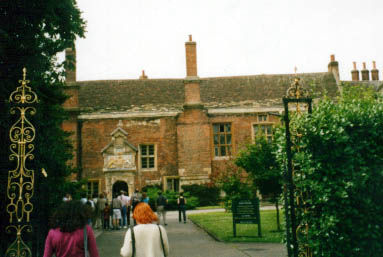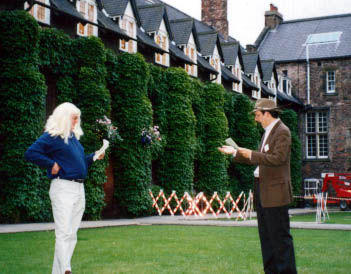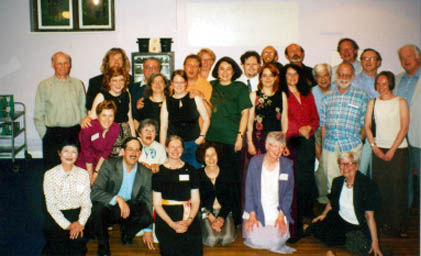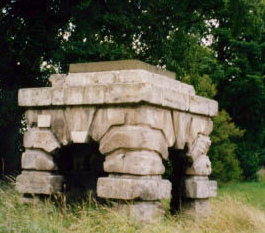The Third Day
Wednesday morning, I delivered my paper called "Beating and Binding in a Shaky Liturgical Era: Religion and the Modern Robin Hood Legend." As an introduction I mentioned last night's clerical visitor and said I felt my paper had been blessed by Friar Tuck. At the last conference, I delivered a paper on the sheriff. This year's paper wasn't an example of a continuing interest in Robin's foes as some have suggested. Rather, I'd like to think it continues the themes of my papers on Robin Hood comics and the sheriff. In part, they examine the basic outlaw nature of Robin and how his activities have been modified to be more acceptable.
Before my paper, Lorraine Stock looked at the role of disguise, green clothing and the reference to Robin has the "Mayster-herte" in the Gest. Tim Jones discussed Howard Pyle's Robin Hood. After my paper and tea, Thomas Ohlgren delivered the final plenary lecture. Once again, he examined the manuscripts of the Potter and Monk ballads and this time turned his attention to finding new details in the early printed texts of the Gest. After lunch, Laura Blunk talked about "Sibling Royalty" and the shifting portrayals of Kings Richard and John in the history books and films (some intriguingly obscure). Lesley Coote and Brian Levy teamed up to take a psychoanalytic approach to the "Gender Problem" in Robin Hood films. In a similar vein, Roberta Staples investigated "Marian as anima". After still more tea and coffee, the final three papers were presented. Thea Somerfield looked at another gentleman named Robert who had a brush with the outlaw genre, Robert the Bruce. Mary Hamel discussed "Robin Hood and Star Trek", focusing on the outlaw's appearance in the Next Generation episode "Q-Pid". Finally, Stephen Knight spoke on "Robin Hood and the Crusades" or so his title claimed. In fact, Stephen analyzed the social implication of Robin Hood riding a horse. After having us sing the Richard Greene theme with its "Riding through the glen" lyric, he produced a slide of the woodcut of the yeoman on horseback and announced "But I want to interrogate this guy". It was a witty end to a great three days of Robin Hood papers.
But not quite the end of the conference. I participated in a discussion about the merits and faults of Kevin Costner's Prince of Thieves. The session was chaired by Alan Gaylord, a fine scholar, gentleman, friend -- and interestingly someone who defends the film. In another room, Lorraine Stock chaired a session on teaching Robin Hood. I wish I could have been there as well, but Helen Philips managed an organizational miracle in making nearly all of the conference plenary.




Contact Us